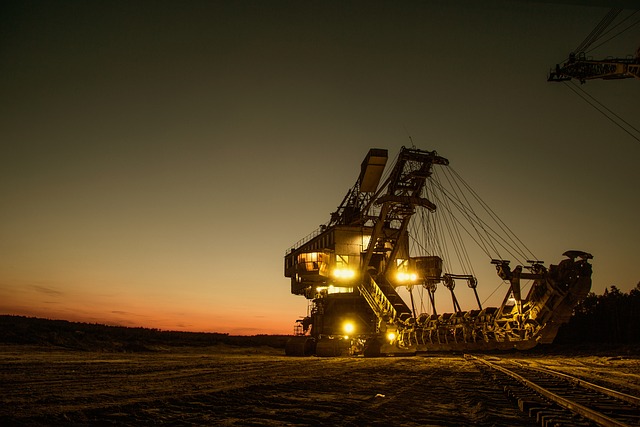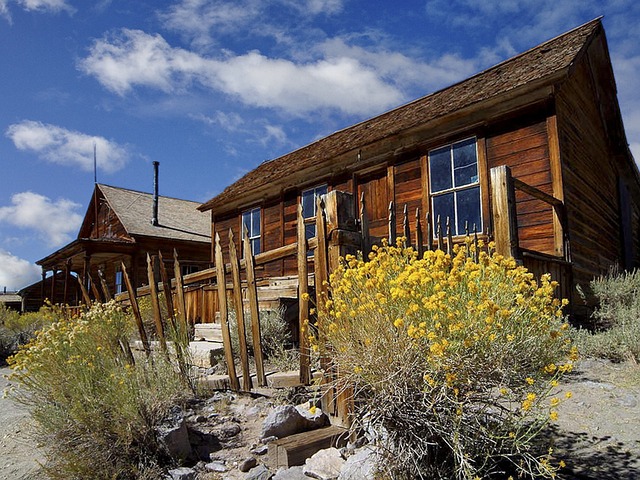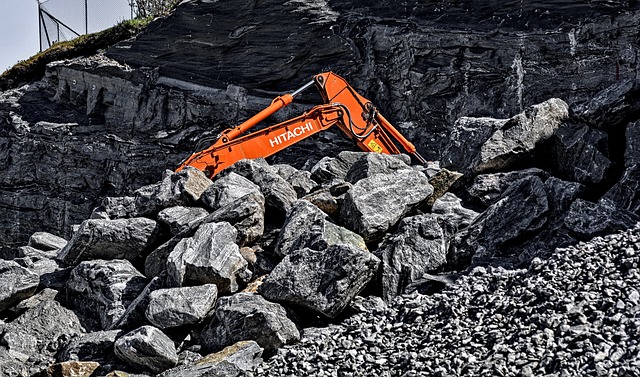In the mid-19th century, Lane County, Oregon experienced a profound transformation driven by the gold rush, which sparked a period of dynamic economic growth and social change. This era attracted adventurers worldwide, leading to rapid town development, diverse business proliferation, and intense mining activities. The gold rush left an indelible mark on the county's landscape and history, shaping its future through economic prosperity, cultural diversity, and complex challenges like land disputes and environmental degradation. Today, Lane County retains a legacy of robust agriculture and a vibrant tapestry woven from this pivotal chapter in Oregon's history, characterized by "gold rush economics."
“Lane County, Oregon, was transformed by the gold rush era, sparking an economic boom that left an indelible mark on its history. This article delves into the vibrant past of one of the state’s most dynamic periods, exploring its impact from a historical, social, and economic perspective. Discover how gold mining techniques innovated, populations shifted, and communities developed during this frenzied time, while also uncovering the challenges faced—from labor disputes to environmental concerns. Unravel the legacy left behind by Lane County’s gold rush era and its enduring influence on the region’s economy and culture.”
- A Historical Glimpse: Lane County During the Gold Rush Era
- Economic Boom: The Impact of Gold Discovery in Lane County
- Gold Mining Techniques and Innovations in Early Lane County
- Social Dynamics: Changes in Population and Community Development
- Challenges and Controversies: Disputes, Labor Issues, and Environmental Concerns
- Legacy of the Gold Rush: Long-term Effects on Lane County's Economy and Culture
A Historical Glimpse: Lane County During the Gold Rush Era

During the mid-19th century, Lane County in Oregon became a vibrant hub of economic activity, fueled by the exciting prospect of gold discovery. This period marked a significant turning point in the county’s history, drawing a diverse array of settlers and adventurers from across the globe. The allure of striking it rich on the rich mineral lands of Lane County was a powerful magnet, transforming its landscape and communities.
The gold rush era brought forth a bustling environment as prospectors flooded into the region, each hoping to uncover valuable nuggets. This influx led to the rapid development of new towns and the expansion of existing settlements. The once-quiet forests and rivers became vibrant with the hustle and bustle of mining camps, general stores, and saloons. Lane County’s gold rush not only left an indelible mark on its geographical features but also shaped its social dynamics, cultural fabric, and economic landscape, making it a fascinating chapter in Oregon’s history.
Economic Boom: The Impact of Gold Discovery in Lane County

When word spread about gold discoveries in Lane County, Oregon during the mid-19th century, it sparked an economic boom that transformed the region’s landscape. Prospectors flocked to the area, attracted by the promise of riches, leading to a rapid population growth and diverse influx of people from all walks of life. The once tranquil countryside became a bustling hub of activity as miners, merchants, and settlers converged, creating a vibrant market and fostering unprecedented economic growth.
The gold rush economics in Lane County had a profound impact on the local community. New businesses sprung up to support the burgeoning population, from general stores and saloons to stable services and accommodations. The demand for goods and services surged, stimulating various industries and paving the way for long-term prosperity. This period left an indelible mark on the county’s history, shaping its economy and setting the stage for future development.
Gold Mining Techniques and Innovations in Early Lane County

In the heart of Lane County, Oregon, during the frenzied days of the Gold Rush, pioneers and fortune seekers employed a variety of techniques to extract the precious metal from the earth. From simple panning methods along rivers and streams to more intricate sluice box systems, these early mining practices were driven by the economics of the time, where the promise of quick riches motivated many to try their hand at gold mining. Innovations such as the use of mechanical digging equipment and advanced hydraulic systems gradually evolved as miners sought to increase efficiency and maximize yields in response to the region’s booming gold rush activity.
The Gold Rush not only reshaped the landscape but also the local economy, attracting a diverse array of individuals seeking their fortune. Lane County became a hub for entrepreneurial spirits, with businesses springing up to support the mining industry. From supply stores catering to miners’ needs to establishments offering services and accommodations, the area’s economic growth was directly tied to the success of its gold mining ventures. This period left an indelible mark on the county’s history, shaping its identity even long after the gold had been extracted from the rich veins that once thrived in this picturesque part of Oregon.
Social Dynamics: Changes in Population and Community Development

The Lane County Oregon gold rush era brought about significant social dynamics, marked by dramatic changes in population and community development. The influx of prospectors from around the globe led to a rapid expansion of the local population, transforming the demographic makeup of the region. This sudden surge created a vibrant yet chaotic atmosphere as new arrivals sought their fortunes, leading to the establishment of diverse communities with unique cultural influences.
The gold rush economics spurred the development of infrastructure and businesses catering to the needs of the growing populace. Towns sprang up along major routes, each offering services from accommodation and supplies to banking and entertainment. This period witnessed a remarkable evolution in community dynamics as people from various backgrounds converged, fostering both collaboration and competition. The social fabric became intertwined with the economic drive, shaping a dynamic and ever-changing landscape that left an indelible mark on Lane County’s history.
Challenges and Controversies: Disputes, Labor Issues, and Environmental Concerns

The Lane County Oregon Gold Rush era, while rich in economic potential, was not devoid of challenges and controversies. Disputes over mining claims and land ownership became increasingly common as hundreds of prospectors flooded the region, each hoping to strike it big. Labor issues also arose, with miners often facing difficult working conditions and low wages. The competitive nature of the gold rush led to a struggle for resources, exacerbating tensions among miners and local communities.
Environmental concerns were another significant aspect of this period. Intensive mining activities had a profound impact on the landscape, leading to deforestation, soil erosion, and water pollution. The rushing waters and churned-up earth disrupted the natural balance, threatening the delicate ecosystems that sustained both wildlife and local populations. In light of these challenges, it’s crucial to understand that while the gold rush brought economic opportunities to Lane County, it also left a complex legacy marked by disputes, labor struggles, and environmental degradation.
Legacy of the Gold Rush: Long-term Effects on Lane County's Economy and Culture

The Gold Rush era left an indelible mark on Lane County’s economy and culture, shaping its trajectory for generations to come. The influx of prospectors brought a burst of economic activity, with new businesses springing up to cater to their needs—from provisions stores to blacksmiths and saloons. This period saw the county’s first major population boom, transforming small communities into bustling towns like Eugene and Springfield. The rush also spurred infrastructure development; roads, bridges, and railroads were built to facilitate the movement of people and goods, connecting remote areas and fostering regional growth.
The long-term effects extended beyond the initial frenzy. Gold mining operations established a foundation for agricultural diversification as miners moved on to other pursuits. The county’s fertile lands became hotspots for farming and ranching, contributing to its reputation as a robust agricultural region. Culture too was enriched by this era, with a mix of diverse populations leaving their mark—from Chinese immigrants who built railroads to European settlers who established rural communities. This melting pot of cultures fostered a unique regional identity that still resonates today, evident in Lane County’s vibrant art scene, festivals, and rich historical narratives.
